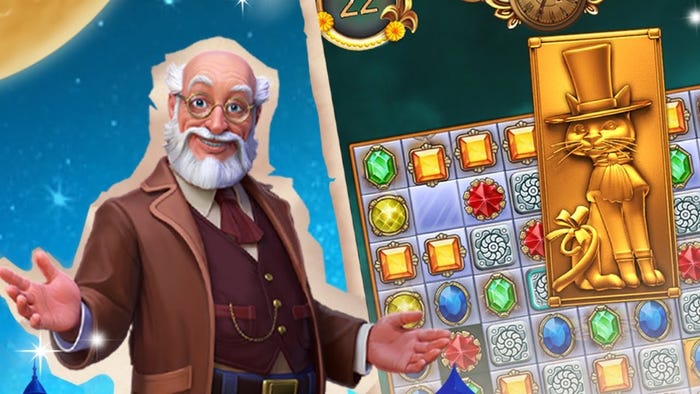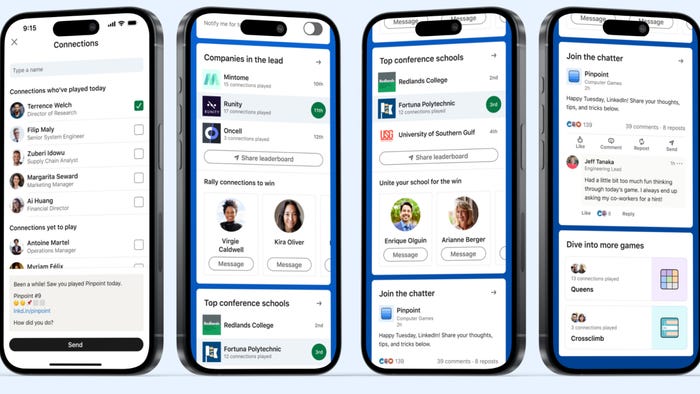
Featured Blog | This community-written post highlights the best of what the game industry has to offer. Read more like it on the Game Developer Blogs.
Depicting the Level Design of a Legend of Zelda Dungeon
The following post is the result of a study that I made after playing multiple Zelda games in order to better understand the patterns and design decisions of a Zelda dungeon.

When talking about our indie game The Girl and the Robot, I often say that one of our main inspiration are games from the Legend of Zelda series. People usually think that I'm talking about the art, but the truth is that my inspiration came mostly from the game mechanics.
There are many factors that make a Zelda game great, but I'm going to try and focus only on the dungeons, which represent in my opinion the very core of the level design. The following is the result of a study that I made a while back after playing multiple Zelda games in order to better understand the patterns and design decisions of a Zelda dungeon.
Some Disclamers
I have never worked on a Zelda game in the past and I have no access to Nintendo's design documents; the folloing are merely observations made by a game designer (me) to better understand the mechanics in Zelda games. Also, the pictures that I use are all the property of Nintendo.

Deku Tree
What is the core gameplay of a Zelda game?
Before understanding what a Zelda dungeon is made of, we must first understand the core gameplay of a Zelda game. Most people will agree that a modern Zelda game is a third person action adventure game. And they are right. But this does not satisfy me in regard of describing the core gameplay of a Zelda game. Allow me to make an hypothesis and describe a Zelda game as the following: A blocked path to Princess Zelda; the player needs to use his combat and puzzle solving skills in order to unblock this path. In this case, Princess Zelda is the goal, but it and can also be the Trifoce or something else depending on the game. At any point in the game, the path to this goal is blocked by one way or another and the player needs to find the "key" to proceed.
Keys and Doors
The main mechanic of a Zelda dungeon is something that I call "Keys and Doors". It's simple; a door is blocking the player's progress and he needs to find a key to open it. This often forces the player to take alternative paths in order to find the key. A good example that shows that mechanic is the very first dungeon of the original Legend of Zelda game as show in the next picture. As we can see, the players needs to explore alternative rooms in order to find keys and proceed to the locked rooms.

First Zelda Dungeon
The many shapes of a key
The "Keys and Doors" mechanic is very common in games, but what makes a Zelda game unique is the many shapes that can take the key. In fact, the "key" is nothing more than an analogy. A “key” can be a simple small key, but it can also be a newly acquired item. For example, as shown in the next pictures, at the beginning of The Legend of Zelda: The Wind Waker, the player cannot go through the forest of Outset Island because the path is blocked with trees. Only after training with the old sword master, the player can get the sword and use it to clear the path. In this case, the trees are the “locked door” and the sword is the “key”. Items like the hookshot, the boomerang and the candle will all become the “key” at some point in the game.

Items are not the only "keys"; sometime the key has another shape or no shape at all. The “key” can be:
A puzzle to solve on the spot (moving crates and pressing switches)
A room that need to be cleared of enemies (defeat all the skeletons to open the door)
A room that requires agility skills (jump from platform to platform to reach the next room)
Those are all “keys” in a way. Once we understand the "Keys and Doors" mechanic, we can better understand how to make a dungeon.
What do you need to make a Zelda dungeon?
The following is a recipe that includes the basic ingredients I found to make a Zelda dungeon.
The entrance
The entrance is the room that connects the dungeon with the overworld (world map). Usually, the player had to also deal with the "Keys and Doors" mechanic in the overworld in order to gain access the entrance of the dungeon.
The spider body
After passing through the entrance, the player usually ends up in a central area that I would like to call the "spider body". This area connects the multiple main paths of the dungeon and can even be connected to the locked boss room.
The spider legs
In the spider body, the player can take on multiple paths that I call "spider legs"; some of those paths are locked and some are not. If the player does not have the necessary "key" to open a path, he will need to explore the paths that are unlocked in order to find it. Remember, a “key” in a Zelda game can have many shapes.
A room with a key
A spider leg consists of a series of room. Some room holds a "key" that enable the player to proceed in the dungeon. The last room of a spider leg is often a room with a "key" that enable the player to explore a new spider leg.
A new item
A dungeon usually holds a new item, which is basically a new “key”. The player needs to figure out how to use it in order to unlock new paths.
The spider head
The boss room or the "spider head" is the location of the dungeon's boss. Often this boss needs to be defeated with the newly acquired item (weapon) found in the dungeon. Defeating the boss usually clears the dungeon. I noticed in The Legend of Zelda: Twilight Princess that mid-level bosses are introduced in the middle of a dungeon to probably give a better pacing to the gameplay.
Conclusion
This concludes my depiction of a Zelda Dungeon. I hope that my little personal study helped you better understand the level design in a Zelda game and that it can inspire you for your own game projects.
My Twitter: @FlyingCarpetsG
Read more about:
Featured BlogsAbout the Author(s)
You May Also Like








